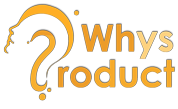“The Lean Product Playbook” by Dan Olsen is a guidebook for product managers and entrepreneurs on how to build successful products using the Lean methodology. The book is divided into three sections: “Product Vision,” “Product Strategy,” and “Product Delivery.” It covers topics such as creating a product vision, validating product-market fit, and building a product roadmap.
The book emphasizes the importance of customer research and testing to validate product ideas, and provides a step-by-step process for conducting these activities. It also covers key concepts such as the Lean Startup, Minimum Viable Product (MVP), and the Build-Measure-Learn feedback loop.
The 10 most important recommandations
Here are ten of the most important recommendations with examples from the book that could be useful for product people:
- Start by defining a clear product vision that is aligned with the company’s overall mission and strategy. This helps to ensure that the product is aligned with the company’s overall goals and strategy and that everyone is working towards the same objectives.
- Conduct customer research and testing to validate product ideas and understand customer needs. This helps to ensure that the product is solving a real problem for customers, and that it is something that they are willing to pay for.
- Use the MVP approach to quickly test and iterate on product ideas. This helps to reduce the risk of developing a product that is not viable and to validate the assumptions of the product.
- Continuously gather feedback from customers and use it to improve the product. This helps to ensure that the product is meeting the needs of the customers and that it is continuously improving.
- Use data and metrics to make informed decisions about the product. This helps to ensure that the product is on track and that it is meeting the goals that were set out.
- Use the Build-Measure-Learn feedback loop to continuously improve the product and drive growth. This helps to ensure that the product is continuously improving and that it is aligned with customer needs.
- Understand and implement the Lean Startup methodology to build a product that is validated by customer needs and that can scale. This helps to reduce the risk of failure and to optimize the chances of success.
- Understand and use the right metrics to track the progress and the performance of the product. This helps to ensure that the product is on track and that it is meeting the goals that were set out.
- Use a product roadmap to plan and execute the product development. This helps to ensure that the product is aligned with the company’s overall goals and strategy and that everyone is working towards the same objectives.
- Use the principles of the Lean Product Playbook throughout the product development process, to build a product that is validated by customer needs and that can scale.
Overall, “The Lean Product Playbook” provides a comprehensive framework for product managers and entrepreneurs to build successful products. It emphasizes the importance of customer research and testing, and provides a step-by-step process for conducting these activities and recommends key concepts such as the Lean Startup, Minimum Viable Product (MVP), and the Build-Measure-Learn feedback loop.
MVP
According to “The Lean Product Playbook” by Dan Olsen, an MVP (Minimum Viable Product) is a version of a product that has just enough features to satisfy early customers and provide feedback for future product development. The MVP allows product teams to validate key assumptions and test the product-market fit before investing significant resources in building a full-featured product. It’s important for product teams to understand that an MVP is not a “bare bones” version of the final product, but rather a product that has the key features necessary for early customers to engage with and provide feedback on. This helps to minimize risk and ensure that the product is heading in the right direction before committing to a full buildout.
Acquisition funnel
In “The Lean Product Playbook,” Dan Olsen describes the acquisition funnel as a way to understand the different stages that a user goes through in order to become a customer. The funnel is typically divided into four stages: awareness, consideration, conversion and retention. In the awareness stage, the user is first exposed to the product or service. In the consideration stage, the user starts to evaluate the product or service and determine whether it meets their needs. In the conversion stage, the user becomes a customer. And in the retention stage, the customer continues to use the product or service and potentially becomes a repeat customer. Throughout the funnel, the goal is to move users through each stage as efficiently and effectively as possible, so that more users convert into customers and become loyal users.
Dan Olsen
Dan Olsen is an author, entrepreneur, and product management advisor. He is the author of the book “The Lean Product Playbook: How to Innovate with Minimum Viable Products and Rapid Customer Feedback”, which offers guidance on creating successful digital products using the lean methodology. He also runs a consulting practice where he helps startups and larger companies develop their product management capabilities. Dan has worked with a variety of companies, from early-stage startups to large enterprises like Google, Intuit, and Salesforce. He also teaches product management at the University of California, Berkeley, and Stanford Continuing Studies.

